Table of Contents
Villa-Lobos – Choros (N°1) Guitar sheet music

Heitor Villa-Lobos
Heitor Villa-Lobos, a Brazilian composer
Heitor Villa-Lobos is without a doubt the most important name in Brazilian classical music of all time, and one of the most significant in all of America. Villa-Lobos is to Brazilian music what JS Bach is to German music: as if everything had started with him. He was the very expression of Brazil: mix of races, cultural heritage and a joyful way of living life. The Brazilian flutist José Ananias Souza Lopes did an interesting work on him, with special emphasis on his music composed for flute.
Descarga las mejores partituras de nuestra biblioteca.
The great Brazilian poet Manuel Bandeira had the following definition of Villa-Lobos: “he was a genius, the most authentic we have ever had, if we ever had one”
Perhaps the most brilliant idea of Villa-Lobos was the originality in the treatment of regional demonstrations to reach people of different nations.
Villa-Lobos was the very expression of Brazil: mix of races, cultural heritage and a joyful way of living life.
Heitor Villa-Lobos was born on March 5, 1897 in Rio de Janeiro, in a house on Ipiranga street that no longer exists. His parents, Raúl Villa-Lobos and Noemia Umbellina Santos Monteiro, had eight children, but only Heitor showed interest and vocation for music.
His father, an employee of the National Library, had a great interest in music. At his house, every Saturday, important musicians of his time would meet to play together until the wee hours. This habit, which lasted for many years, decisively influenced Heitor’s development.
He began his cello studies at the age of six with his father on a specially adapted viola. “My father, apart from being a cultured and intelligent man, was a perfect musician, with great technique.
Please, subscribe to our Library.
If you are already a subscriber, please, check our NEW SCORES’ page every month for new sheet music. THANK YOU!
With him, I attended rehearsals, concerts and operas many times. I also learned how to play the clarinet and was forced to discern the genre, style , character and origin of the works, apart from declaring precisely the tuning of the sounds or accidental noises that appeared at the time, the sound of a train wheel, the song of a bird, the fall of a metallic object, etc. Poor me when I didn’t do it well…”
It was said that the father tied his feet to a table leg when he left for work in order to make sure that Heitor did all the homework. The acceptance of the rigidity and discipline with which Heitor was treated by his father, is a contradiction with the character developed later by him. A character full of exuberance and independent feelings that will undoubtedly be the trademarks of his music.
Villa-Lobos and popular music
With the early death of his father at the age of 37, his mother was responsible for supporting the family.
Mrs. Villa-Lobos wanted her son to become a doctor, but Heitor had other plans. Without the presence of his father, he began to be captivated by the type of music that was played in the streets and squares of the city. That type of music was Choro, which appeared in Rio de Janeiro in the last decades of the 19th century.
This type of music, frequently virtuoso instrumental music, was composed and played by the “choros”, a group of musicians who got together regularly for the pleasure of playing, and even to play at parties or carnivals.
This interest led him to study the guitar, without the knowledge of his mother, who did not approve of her son hanging out with composers of this type of music, who were considered criminals.
In these meetings, Villa-Lobos, who until now knew very little about popular music, began to become aware of the rhythm, its inflections, and the veiled characteristics of popular music culture.
Villa-Lobos himself used to say “The choros of that time were intelligent improvisation. What they do through jazz, we did here in Rio at the beginning of the century.” In the choros, there were four, five or six: a trumpet, a euphonium, a guitar, a bass, a flute, sometimes a cavaquinho (small four-string guitar).
Heitor’s musical initiation had other great influences. At the same time that he found the classical pieces that he listened to at musical gatherings in his house boring, young Heitor was amazed when he heard JS Bach’s “The Well-Tempered Clavier” played on the piano by his aunt Zizinha.
These two sources played a decisive role in the formation of Heitor’s musical style; on the one hand the irreverence and free improvisation of the choros; on the other hand, the severe discipline of the music of JS Bach.
Villa-Lobos’ travels through Brazil
At the age of 16, Heitor left his mother’s house and began to live with his aunt Zizinha, thus gaining great freedom to attend the Choroes, and even start playing the cello in a small orchestra. He started a Bohemian phase of his life. Dividing his time to play in cabarets, small hotels, cinemas, bars and even compose small waltzes, polkas, band music and popular music without great pretensions.
At the age of 18, he made the first of a series of trips within Brazil, this one to the northern region of the country, to satisfy his desire to get to know the country and learn more about popular and folk music. Not being a systematic researcher, Heitor tried to absorb everything he heard, and then create his own language.
Only in 1907, concerned about composition, he began to study regularly, entering the National Institute of Music in Rio de Janeiro, where he was a student of Franca and Francisco Braga. This period was very short, as systematic and academic study collided with Heitor’s fertile imagination.
New trip, this time heading west. Assuming his status as a self-taught musician, during this trip he composed his first attempt at a draft of a musical painting, “Cánticos Sertanejos” for small orchestra. His longest trips began in 1910. Being hired by an operetta company, Heitor traveled all over the north of the country, even practically in the Amazon, lived with aborigines, was shipwrecked twice in canoes, took quinine to avoid contracting malaria, etc.
As a result of those trips he brought many notes (what he was able to save from his 2 shipwrecks); but in everything he brought, the existence of Brazil is there, something that the study cannot give. It was not the existence of this or that area; it was a panoramic vision, where the northeast region impressed him much more than the south, because the south was more culturally influenced by European immigration (great Italian and German immigration), which he deeply disliked.
Despite his desire to acquire knowledge of art and mainly of the popular music of his country, Heitor remained loyal to treatises on harmony, counterpoint and orchestration methods; being necessary to affirm that in his rhythmic, harmonic, melodic “adventures” and orchestrations of his compositions there is nothing against what the great masters determined.
Arthur Rubinstein
In 1918, the young composer was introduced to the famous Russian pianist Arthur Rubinstein, who, having heard about the composer through Ernest Ansermet, sought to meet him personally. Upon becoming acquainted with Heitor’s piano work, Rubinstein began to play it immediately, including in his repertoire “A prole do bebe n°1” from 1918; and “Polichinelo”, which is the last number of the suite, was for all his life one of his favorite encores.
Rubinstein was very important to the composer both in Brazil and abroad, having been the first great internationally renowned artist to accept and disseminate Villa-Lobos’s work in its entirety. In response to that friendship, Villa-Lobos dedicated the “Rudepoema” to Rubintein, an attempt at a “pianistic portrait” of that illustrious interpreter.
The French influence
In the city of Rio de Janeiro, where Villa-Lobos was educated, the classical music heard was the usual (Bach, Beethoven, Mozart and others) and also Saint-Saëns, Debussy, Wagner, Puccini, Frank, Fauré, Dukas, Lalo and Chabrier. The influence of France was predominant. The city of Rio de Janeiro had a “Belle Époque” air about it.
At this point, Heitor Villa-Lobos was studying hard the “Musical Composition Course” of Vicent D’Indy. Vicent D’Indy was the greatest influence in his early years as a composer.
A French atmosphere was present at all times in the young Villa-Lobos.
In 1918, when he was already composing the symphonic poem Uirapuru and Amazonas, the “A probe do bebe N° 1” for piano, eminently Brazilian pieces, Heitor confidently used the characters and techniques of Impressionism. The “Carnaval das criancas” (piano suite) reminds the listener of Debussy’s “Children’s Corner”. It is a walk through the Luxembourg Gardens, which Rio de Janeiro in 1920 tried to imitate.
Darius Milhaud
At the same time that Villa-Lobos was writing Uriapuru and Amazonas, he had a decisive encounter in his artistic life: Darius Milhaud arrived in Brazil in 1917, as secretary of the poet Paul Claudel, then French ambassador to Brazil.
Younger than Heitor, Milhaud already had experience with polytonality. It was through Villa-Lobos that the young French composer traveled through the umbada centers, met the groups of choroes, experiences that seem to have greatly impressed Milhaud, who later wrote one of his most celebrated pieces (19221-22): “Saudades do Brasil”.
Villa-Lobos in France
In 1923, Villa-Lobos made his first trip to Europe, settling in Paris, where he had the opportunity to connect with the European elite. His first concert in Paris with his own works took place at the Salle des Agriculteurs, in May 1924, with Louis Fleury as flutist. His second trip to Paris, in 1927, is longer, and he settles down at rue St. Michel No. 11.
In this direction, Villa-Lobos held joyful meetings in the company of Stokowski. Varese, Florent Schmitt, Picasso, Léger and many other artists.
During this period he worked as a reviewer for the publisher Max Eschig. he had the opportunity to widen his circle of artistic friends, obtaining warm reviews from Florent Schmitt on the occasion of the premiere of Choro N°8 and N°10 at the Salle Gaveau.
The relationship with France was definitively established, his works came to be published practically in their entirety by the French publisher Max Eschig. There were concerts where only his works were programmed.
“In fact there are few composers who can occupy an entire program without incurring great risks. Once again Villa-Lobos received the honor of the National Orchestra and faced the challenge with an advantage” (René Dumesnil, Le Monde).
“A Villa-Lobos concert is always something tasteful, explosive and powerful, with that constant characteristic that leaves the listener breathless” (Marc Pincherle, nouvelles litteraires).
Returning to Brazil in 1930, Villa Lobos played a predominant role in the development of the musical life of his country. He developed musical education, created choirs, orchestras, organized concerts and much more. How could it be otherwise, these concerts contained a large number of French music premieres by his contemporaries Honnegger, Milhaud, Ravel, Roussel, Schmitt, Poulenc, etc.
After the Second World War, Villa-Lobos resumed his travels. He returns to Paris and stays for long periods. Roger Ducasse appointed him Professor of composition at the Paris Conservatoire. He traveled a lot conducting concerts in Vienna, Amsterdam, Rome, Brussels, Madrid, Lyon, Amiens, etc.
His concerts in Paris every spring became a ritual. In 1952 the National Orchestra of France under his direction premiered the symphonic poem “The Discovery of Brazil”. Between 1954 and 1958 intense joint work was developed between Villa-Lobos and the same orchestra, resulting in countless recordings of his works with that orchestra.
His new address was now Rue de l’Arcade. Bedford Hotel, near the Madelaine Church. Everyone who lived around Villa-Lobos in those years of his life remembers the intense work done by Heitor on his compositions. Although he never stopped receiving his friends, always with a smile and a cigarette on his lips.
Villa-Lobos in North America
Simultaneous with his French connections, Villa-Lobos developed a successful career in the United States of America.
His first trip to that country was in 1944, when he conducted the Boston Symphony in a program with his works (Bachiana No. 7, orchestrated version of Rudepoema, and Choro No. 12).
From that moment on, Villa-Lobos began to visit the United States every year, becoming a famous composer in that country. He was honored with the degree “Honoris causa” from New York University, composed the music for the MGM studio film (Green Mansions, later adapted as a concert piece “Bosque del Amazonas”).
For his 70 years, the New York Times dedicated a small editorial to him.
“The musician is 70 years old. Heitor Villa-Lobos, one of the most famous composers and one of the most remarkable men in the musical world of our time, will complete 70 years of life tomorrow.
His energy and enthusiasm were always the same, and his creative power maintains its same intensity.
In his time and in his place, he exercised an enormous and personal influence over the renewal movements of his country, in search of the amplification of his own culture and the rediscovery of the creative power of his people “.
The last concert
Villa-Lobos’s position in Brazilian music is fundamental. He was the creator of Brazilian national music and is still the best composer of his country. He never started a “school” of his own, since he had little time for teaching, but his music has been the guide for every contemporary Brazilian composer, and thus his influence remains stronger than ever.
Heitor conducted his last concert on July 12, 1959 in New York. In September, he was present at the Municipal Theater of Rio de Janeiro for an audition of the Magnificat Alleluia.
The disease that attacked him in 1948 worsened. He was hospitalized at the Hospital de los Extranjeros and returned home after a surprising improvement. But he died in his apartment on Araujo Porto Alegre street on November 17, 1959 at the age of 72.
Heitor Villa-Lobos was married twice. The first with the pianist Lucilia Guirmaraes in 1913. The second, in 1936, with Arminda de Almeida (Mindinha). None of his wives gave him children, but they devoted themselves exclusively to him.
Browse in the Library:
| Artist or Composer / Score name | Cover | List of Contents |
|---|---|---|
| A dozen A Day Book 1 Technical exercises for the piano |
 |
A dozen A Day Book 1 Technical exercises for the piano |
| A dozen A Day Book 2 Technical exercises for the piano |
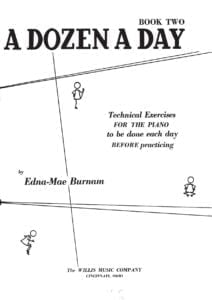 |
|
| A dozen A Day Book 3 Technical exercises for the piano |
 |
|
| A dozen A Day Book 4 Technical exercises for the piano |
 |
|
| A dozen A Day Mini Book Technical exercises for the piano |
 |
|
| A dozen Day Preparatory Book Technical exercises for the piano |
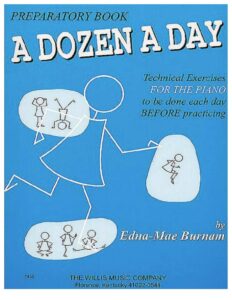 |
|
| A Farewell To Arms Love Theme From A Farewell To Arms film by Mario Nascimbene Francis Webster 1957 |
 |
|
| A Felicidade (Antonio Carlos Jobim) | ||
| A Festival Gathering Of Carols (Musescore File).mscz | ||
| A Fine Frenzy – Almost Lover |
 |
|
| A Fistful of Dollars (Ennio Morricone) | ||
| A Generative Theory Of Tonal Music by Fred Lerdahl and Ray Jackendoff (Book) |
 |
|
| A Guide To Guitar Chords by Curt Sheller |
 |
A Guide To Guitar Chords by Curt Sheller |
| A Guide To Musical Analysis by Nicholas Cook (Book) |
 |
|
| A Handbook Of Piano Playing (By Eric Hope) (1962) |
 |
|
| A Heart Full Of Love (Musescore File).mscz | ||
| A love suicide (Yutaka Minobe) | ||
| A Love Supreme (by Ashley Kahn) The story of john Coltrane’s signature album (Book) |
 |
|
| A Media Luz (Edgardo Donato) | ||
| A Modern Approach To Jazz Rock And Fusion For Guitar with Tablature |
 |
A Modern Approach To Jazz Rock And Fusion For Guitar |
| A Modern Method For Guitar (Berklee) 1 by William Leavitt |
 |
A Modern Method Berklee 1 |
| A Modern Method For Guitar (Berklee) 2 by William Leavitt |
 |
A Modern Method For Guitar (Berklee) 2 |
| A Modern Method For Guitar (Berklee) 3 by William Leavitt |
 |
A Modern Method For Guitar (Berklee) 3 |
| A MOZART REINCARNATED (Ennio Morricone) |
 |
|
| A Mozart Reincarnated by Ennio Morricone (Musescore File).mscz | ||
| A New Approach To Ear Training by Leo Kraft (BOOK) |
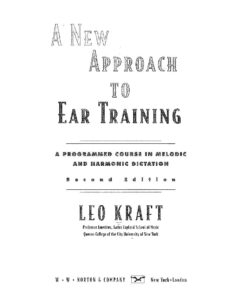 |
|
| A New Approach To Piano Technique (By Ruth A. Dickerson) (1962) |
 |
A new approach to piano technique |
| A Night In Tunisia – Dizzy Gillespie.mscz | ||
| A Pedal Method For The Piano (By Albert F Venino) (1893) |
 |
|
| A Popular Account Of Ancient Musical Instruments And Their Development by William Lynd (Book 1897) |
 |
|
| A Rockin’ Christmas Piano Vocal Guitar |
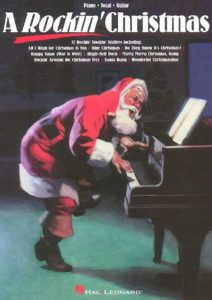 |
A Rockin’ Christmas Piano Vocal Guitar Contents — Rockin Christmas |
| A Single Man – George’s Waltz (Shigeru Umebayashi) | ||
| A Single Man – Stillness of the Mind (Abel Korzeniowski) | ||
| A Smooth Jazz Christmas – Mellow Seasonal Favorites for Piano arr. Roger House |
 |
A Smooth Jazz Christmas – Mellow Seasonal Favorites for Piano arr. Roger House |
| A Song For You – Leon Russell Ray Charles (Musescore File).mscz | ||
| A Star Is Born – Always Remember Us This Way Lady Gaga |
 |
|
| A Star Is Born – Shallow Lady Lady Gaga |
 |
|
| A Tale Of Two Sisters Ost – Epilogue Piano Solo |
 |
|
| A Thousand Years – Twilight OST (Christina Perri) | ||
| A Time For Love – Johnny Mandel |
 |
|
| A Time For Us – Guitar TABlature |
 |
|
| A Time For Us (Love Theme from Romeo and Juliet) Nino Rota |
 |
|
| A Time For Us (Romeo and Juliet OST) Nino Rota | ||
| A Touch Of Jazz 14 well-known hymns, gospel songs and contemporary praise songs by Wolaver Bill |
 |
A Touch Of Jazz 14 well-known hymns, gospel songs and contemporary praise songs by Wolaver Bill |
| A Tribute To Ella Fitzgerald Piano Vocal Guitar |
 |
A tribute to ELLA FITZGERALD |
| A Walk To Remember – Only Hope | ||
| A whiter shade of pale – Procul Harum | A whiter shade of pale – Procul Harum | |
| AaRON U-turn Lili Piano |
 |
|
| Ab Ovo – Joep Beving (Musescore File).mscz | ||
| Abba – Abba Gold – Greatest Hits |
 |
ABBA Gold Geatest Hits booksong sheet music |
| Abba – Chiquitita | ||
| Abba – Dancing Queen | ||
| Abba – Fernando | ||
| Abba – I Have A Dream | ||
| Abba – Like An Angel Passing Through My Room | ||
| Abba – Mamma Mia | ||
| Abba – Slipping Through My Fingers | ||
| Abba – Thank You For The Music | Abba-Thank-You-For-The-Music 1st page | |
| ABBA – Thank You For The Music (Piano Vocal Guitar) | ABBA – Thank You For The Music (Piano Vocal Guitar) | |
| ABBA – Thank You For the Music (Piano vocal Guitar) (Musescore File).mscz | ||
| Abba – Thank You For The Music Piano & vocal | Abba – Thank You For The Music-abba-satb | |
| Abba – The Winner Takes It All | ||
| ABBA Dancing Queen Easy Piano Solo |
 |
|
| ABBA Fernando (Piano Solo arr.) |
 |
|
| ABBA Fernando (Piano Solo arr.).mscz | ||
| ABBA Greatest Hits |
 |
ABBA GREATEST HITS SHEET MUSIC BOOK |
| ABBA I Have A Dream |
 |
|
| Abba The Very Best Vol 1 Easy Piano Hans Gunter Heumann Pop Classics For Piano |
 |
Abba The Very Best Vol 1 Easy Piano |
| Abba The Very Best Vol 2 Easy Piano Hans Gunter Heumann Pop Classics For Piano |
 |
Abba The Very Best Vol 2 Easy Piano |
| Abbey Lincoln Songbook |
 |
Abbey Lincoln Songbook |
| Abbey Lincoln Songbook Piano Vocal Guitar Chords |
 |
Abbey Lincoln Songbook Piano Vocal Guitar Chords |
| Abdullah Ibrahim – The Piano World Of |
 |
Abdullah Ibrahim, The Piano World Of |
| Abdullah Ibrahim The African Piano Of Abdullah Ibrahim Vol 1 |
 |
Abdullah Ibrahim The African Piano Of Abdullah Ibrahim Vol 1 |
| Abdullah Ibrahim The Wedding (piano solo transcription sheet music, partition) |
 |
|
| Abel Korzeniowski – Death Is My Heir (from Romeo and Juliet) |
 |
|
| ABRSM Jazz Piano Pieces Grade 1 to 5 |
 |
ABRSM Jazz Piano Pieces Grade 1 to 5 ABRSM Jazz Piano Pieces Grade 5ABRSM Jazz Piano Pieces Grade 5 |
| ABRSM Piano Exam Pieces Grade 1 (2016) |
 |
ABRSM Piano Exam Pieces Grade 1 (2016) |
| ABRSM Piano Scales, Arpeggios Grade 8 |
 |
|
| ABRSM Piano Scales, Arpeggios and broken chords Grade 1 |
 |
|
| ABRSM Piano Scales, Arpeggios and broken chords Grade 4 |
 |
ABRSM Piano Scales, Arpeggios and broken chords Grade 4 |
| ABRSM Piano Scales, Grade 2 A Guide for Students and Teachers | ABRSM Piano Scales, Grade 2 A Guide for Students and Teachers | |
| ABRSM – Time pieces for guitar vol. 1 |
 |
|
| ABRSM – Time pieces for guitar vol. 2 |
 |
|
| ABRSM 2017 18 Piano Exam Pieces Grade 1 |
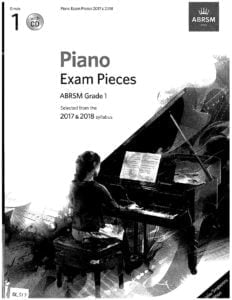 |
ABRSM 2017 18 Piano Exam Pieces Grade 1 |
| ABRSM 2017 18 Piano Exam Pieces Grade 2 |
 |
ABRSM 2017 18 Piano Exam Pieces Grade 2 |
| ABRSM 2017 18 Piano Exam Pieces Grade 3 |
 |
|
| ABRSM 2017 18 Piano Exam Pieces Grade 4 |
 |
|
| ABRSM 2017 18 Piano Exam Pieces Grade 5 |
 |
|
| ABRSM 2017 18 Piano Exam Pieces Grade 6 |
 |
|
| ABRSM 2017 18 Piano Exam Pieces Grade 7 |
 |
|
| ABRSM 2017 18 Piano Exam Pieces Grade 8 |
 |
|
| ABRSM 2021-2022 Piano Exam Pieces Grade 1 |
 |
|
| ABRSM 2021-2022 Piano Exam Pieces Grade 2 |
 |
|
| ABRSM 2021-2022 Piano Exam Pieces Grade 3 |
 |
|
| ABRSM 2021-2022 Piano Exam Pieces Grade 5 |
 |
|
| ABRSM 2021-2022 Piano Exam Pieces Grade 6 |
 |
|
| ABRSM 2021-2022 Piano Exam Pieces Grade 8 |
 |
|
| ABRSM 2021-2022 Piano Exam Pieces Initial Grade |
 |
ABRSM 2021-2022 Piano Exam Pieces Initial Grade |
| ABRSM Aural Training In Practice Book 1 Grades 1 to 3 |
 |
|
| ABRSM Aural Training In Practice Book 2 Grades 4 and 5 |
 |
|
| ABRSM Discovering Music Theory (Complete) Grades 1 to 5 Workbook by Simon Rushby (2020 Exams) |
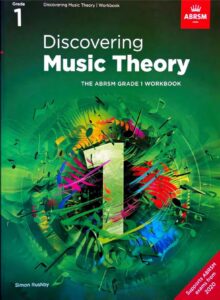 |
ABRSM Discovering Music Theory (Complete) Grades 1 to 5 Workbook by Simon Rushby (2020 Exams) contents |
| ABRSM Erster Verlust Grade 4 ABRSM Piano Exam Pieces 2021 & 2022 |
 |
|
| ABRSM Etude In A Minor – Dmitry Kabalevsky ABRSM Grade 4 Piano Exam Pieces 2021 & 2022 |
 |
|
| ABRSM Grade 2 – Inter-City Stomp byChristopher Norton From Microjazz Collection (Sheet Music) |
 |
|
| ABRSM Initial Grade Piano Exam Pieces 2023 2024 |
 |
|
| ABRSM Minuet and Trio D 41 No 21 – Franz Schubert ABRSM Grade 4 Piano Exam Pieces 2021 & 2022 |
 |
|
| ABRSM More Music Theory Sample Papers Grade 5 For New Format |
 |
|
| ABRSM Music Theory In Practice, Grade 1 (Eric Taylor) |
 |
|
| ABRSM Music Theory In Practice, Grade 2 (Eric Taylor) |
 |
|
| ABRSM Music Theory Past Papers Grade 1 2004 |
 |
|
| ABRSM Music Theory Past Papers Grade 4 2016 |
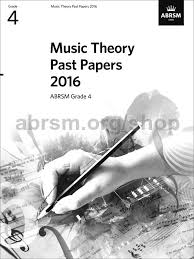 |
|
| ABRSM Music Theory Past Papers Grade 5 2012 |
 |
|
| ABRSM Music Theory Past Papers Grade 6 2013 |
 |
|
| ABRSM Nikki Iles Danny Boy ABRSM Piano Exam Grade 8 2023 Jazz Piano arr. inspired by Bill Evans |
 |
|
| ABRSM Nikki Iles Friends Book 1 Intermediate Jazz Pieces For Piano |
 |
ABRSM Nikki Iles Friends Book 1 Intermediate Jazz Pieces For Piano |
| ABRSM Nikki Iles Friends Book 2 Intermediate To Advanced Jazz Pieces For Piano |
 |
ABRSM Nikki Iles Friends Book 2 Intermediate To Advanced Jazz Pieces For Piano |
| ABRSM Nikki Iles The Elephant Parade ABRSM piano Exam |
 |
|
| ABRSM Piano 2025-2026 Grade 8 C3 A Nightingale Sang in Berkeley Square by Sherwin – Maschwitz |
 |
|
| ABRSM Piano Exam 2007-2008 Grade 3 |
 |
|
| ABRSM Piano Exam 2015-16 Grade 3 |
 |
ABRSM Piano Exam 2015-16 Grade 3 |
